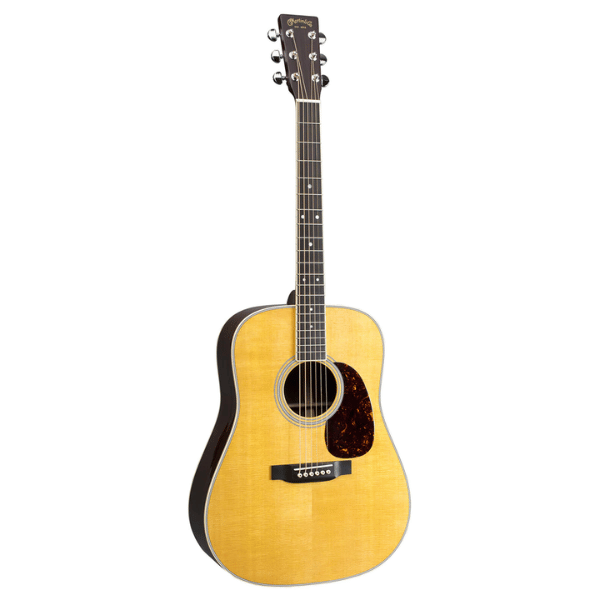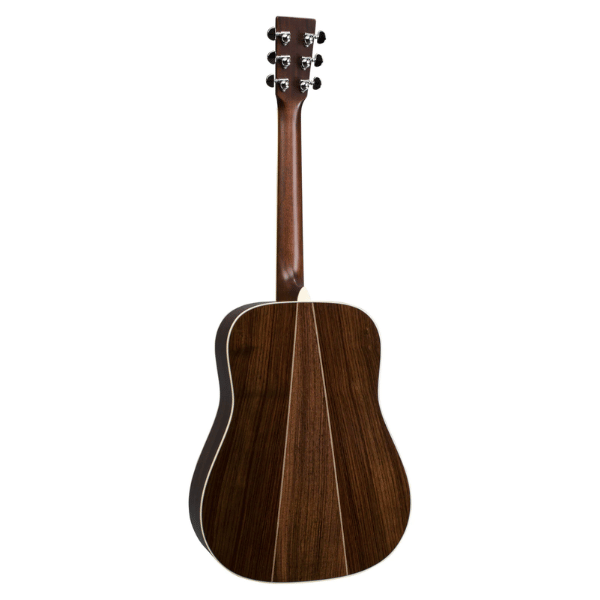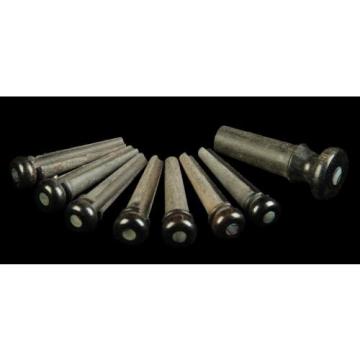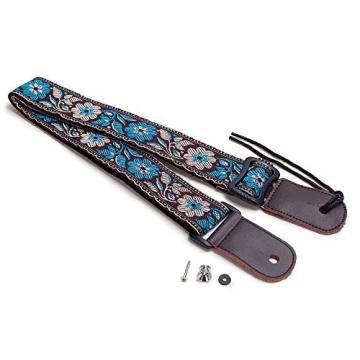Home> Company News> Martin Guitars: The Perfect Companion for Your Musical Journey
- AddressShan Dong Province,China
- Factory AddressShan Dong Province,China
- Phone(Working Time)86-13305315989
- Phone(Nonworking Time)86-13305315989
Martin Guitars: The Perfect Companion for Your Musical Journey
2023-05-06 14:41:32Martin guitars have been a cornerstone of the acoustic guitar industry since their founding in 1833. With a reputation for quality and craftsmanship, Martin guitars have been played by some of the most famous musicians in history, including Elvis Presley, Bob Dylan, and Johnny Cash. In this article, we will explore the history and reputation of Martin guitars, the different series and models available, and the unique qualities that make them a top choice for musicians.
Martin guitars are known for their exceptional tone, playability, and durability. Each guitar is made with premium materials and expert craftsmanship, resulting in a product that is both beautiful and functional. Martin guitars are also highly customizable, with various options for tonewoods, body shapes, and finishes, allowing musicians to create a guitar that suits their individual style and preferences.
There are several series and models of Martin guitars available, each with its unique features and qualities. The most popular series include the Standard Series, which features classic designs and a wide range of tonewood options, and the Authentic Series, which is built to replicate the design and tone of classic Martin guitars from the past. The Performing Artist Series is geared towards modern performers and features cutting-edge electronics for optimal sound amplification, while the X Series offers high-quality Martin guitars at an affordable price point.
Notable musicians who have played Martin guitars include Eric Clapton, Neil Young, and Ed Sheeran, who is known for his custom Martin guitar, the Martin LX1E. These musicians have praised Martin guitars for their exceptional sound quality, playability, and durability, as well as their timeless design.
In conclusion, Martin guitars have a long history of quality and craftsmanship that has made them a top choice for musicians around the world. With various series and models available, Martin guitars offer a wide range of options for musicians of all skill levels and playing styles. Whether you're a beginner or a professional musician, a Martin guitar can provide you with exceptional sound quality, playability, and durability that will last a lifetime.
Choosing the Right Martin Guitar for You
Choosing the right Martin guitar can be a daunting task, with so many different models and options available. Here are some factors to consider when selecting the right Martin guitar for your needs:
-
Playing Style: Consider your playing style when choosing a Martin guitar. Different models are designed for different playing styles, such as fingerstyle, flatpicking, or strumming. Choose a model that suits your playing style to ensure the best sound and playability.
-
Budget: Martin guitars range in price from a few hundred to several thousand dollars. Determine your budget before shopping and consider what features are most important to you.
-
Sound Preferences: Consider what kind of sound you're looking for in a guitar. Martin guitars are known for their warm, rich tone, but different models and tonewoods can produce different nuances in the sound. Consider what kind of music you'll be playing and choose a guitar that produces the tone you're looking for.
-
Body Shape and Size: Martin guitars come in various body shapes and sizes, such as dreadnought, auditorium, and concert. Choose a body shape and size that feels comfortable to play and suits your playing style.
-
Tonewood: The tonewood of a guitar affects its overall sound. Martin guitars use premium tonewoods such as mahogany, spruce, and rosewood, each of which produces a unique tone. Consider which tonewood produces the sound you're looking for in a guitar.
-
Electronics: If you plan on performing or recording with your guitar, consider getting a model with built-in electronics. These allow you to plug your guitar into an amplifier or sound system for amplification and recording.
-
Neck Profile: The neck profile affects how comfortable the guitar is to play. Martin guitars typically have a "modified low oval" neck shape, which provides a comfortable grip for the hand.
-
Fretboard: The fretboard affects the guitar's playability and sound. Martin guitars typically feature an ebony fretboard, which is durable and produces a bright, articulate sound.
-
Skill Level: Your skill level can also affect which Martin guitar is right for you. Beginner guitarists may prefer a model with a smaller body and lower price point, while more experienced guitarists may prefer a model with more advanced features and a higher price point.
Overall, when choosing a Martin guitar, consider your playing style, budget, sound preferences, body shape and size, tonewood, electronics, neck profile, fretboard, and skill level. By considering these factors, you can find the right guitar that suits your playing style and preferences.

Caring for Your Martin Guitar
Caring for your Martin guitar is essential to maintaining its quality and appearance. Here are some tips and tricks for maintaining the quality and appearance of your Martin guitar:
-
Proper Storage: Store your guitar in a cool, dry place away from direct sunlight and sources of heat or moisture. Avoid leaving your guitar in a car or other vehicle where it could be exposed to extreme temperatures.
-
Cleaning: Clean your guitar regularly with a soft, dry cloth to remove dust and fingerprints. Use a guitar cleaning solution or a mild soap and water to remove stubborn dirt or grime.
-
String Replacement: Replace your guitar strings regularly to maintain the quality of sound. Old or worn-out strings can cause the guitar to sound dull or muted. Follow the manufacturer's instructions for string replacement or seek the advice of a professional guitar technician.
-
Humidity Control: Maintain proper humidity levels in the room where you store your guitar. Sudden changes in humidity can cause the wood to expand or contract, leading to damage or cracking. Consider using a humidifier or dehumidifier to maintain a consistent humidity level.
-
Inspection: Regularly inspect your guitar for signs of damage, such as cracks, warping, or loose parts. Address any issues promptly to prevent further damage and ensure the longevity of your guitar.
-
Professional Maintenance: Consider taking your guitar to a professional guitar technician for regular maintenance and tune-ups. A professional technician can address any issues and ensure that your guitar is in top condition.
-
Transportation: When transporting your guitar, use a high-quality guitar case or gig bag to protect it from damage. Secure the guitar inside the case or bag to prevent it from shifting during transport.
In conclusion, caring for your Martin guitar is essential to maintaining its quality and appearance. Proper storage, cleaning, string replacement, humidity control, inspection, professional maintenance, and transportation are all essential aspects of guitar care. By following these tips and tricks, you can ensure that your Martin guitar stays in top condition and sounds great for years to come.
The History of Martin Guitars: From 19th Century Origins to Modern Innovations
Martin guitars have a rich and storied history that spans over 180 years. The company was founded in 1833 by Christian Frederick Martin, a German immigrant who began making guitars in his New York workshop. Martin's early guitars were inspired by the Spanish-style guitar, which he had learned to build while working in Vienna, Austria.
In the 1840s, Martin moved his workshop to Nazareth, Pennsylvania, where the company is still located today. Over the next few decades, Martin continued to innovate and improve his guitar designs, incorporating new materials and construction techniques to improve the sound and playability of his instruments.
One of Martin's most significant innovations was the introduction of the X-bracing system in the 1850s. This system involved crossing two braces inside the guitar body to strengthen the top and create a fuller, richer sound. The X-bracing system became a hallmark of Martin guitars and is still used in many of the company's models today.
In the late 19th and early 20th centuries, Martin guitars gained popularity among musicians, particularly in the folk and country music genres. Martin's Dreadnought model, introduced in 1931, became an instant classic and remains one of the most popular acoustic guitar designs in history.
Throughout the 20th century, Martin guitars continued to innovate and evolve, incorporating new materials and design elements to stay at the forefront of the industry. In the 1960s, Martin introduced the D-35 model, which featured a three-piece back made of rosewood, creating a richer, fuller sound.
In recent years, Martin guitars have continued to push the boundaries of innovation, incorporating new materials and sustainable practices to reduce their environmental impact. In 2019, the company introduced a line of guitars made from responsibly sourced wood, including certified African blackwood, which is a rare and endangered wood species.
In conclusion, Martin guitars have a long and rich history of innovation and craftsmanship that has made them a top choice for musicians around the world. From their early origins in 19th century New York to their modern innovations in sustainable materials and construction, Martin guitars continue to be at the forefront of the acoustic guitar industry.
Martin Guitars for Sale: How to Find the Perfect Instrument
If you're in the market for a Martin guitar, there are several ways to find the perfect instrument. Here are some tips for finding and evaluating Martin guitars for sale:
-
Brick-and-Mortar Stores: Visit a local music store that carries Martin guitars. This allows you to see and play the guitar before purchasing it. The staff can also offer advice and guidance on choosing the right model for your needs.
-
Online Retailers: Shop for Martin guitars online through retailers such as Guitar Center, Sweetwater, and Musician's Friend. These retailers offer a wide selection of Martin guitars, often with detailed descriptions, photos, and customer reviews.
-
Private Sellers: Consider purchasing a used Martin guitar from a private seller. Websites such as Reverb and eBay offer a marketplace for buying and selling used instruments. When purchasing a used guitar, be sure to ask questions and inspect the guitar carefully for any signs of damage or wear.
-
Evaluation: When evaluating a Martin guitar for sale, consider the guitar's condition, sound quality, and playability. Look for any signs of damage or wear, such as cracks, scratches, or loose parts. Play the guitar to test its sound quality and playability, and consider having a professional technician evaluate the guitar before purchasing it.
-
New vs. Used: Consider whether you want to purchase a new or used Martin guitar. New guitars come with a manufacturer's warranty and are often in pristine condition, while used guitars may have signs of wear and may require maintenance or repair.
-
Price: Determine your budget and consider the price of the guitar when making a purchase decision. Martin guitars range in price from a few hundred to several thousand dollars, depending on the model, features, and condition.
In conclusion, there are several ways to find and evaluate Martin guitars for sale, including brick-and-mortar stores, online retailers, and private sellers. When evaluating a guitar, consider its condition, sound quality, playability, new vs. used, and price. By following these tips, you can find the perfect Martin guitar for your needs and budget.
Martin Guitars vs. Other Acoustic Guitar Brands: How Do They Compare?
Martin guitars are one of the most popular and well-respected brands in the acoustic guitar industry. However, they are not the only option available. Here's a comparison of Martin guitars to other popular acoustic guitar brands, such as Taylor and Gibson:
-
Tone: Martin guitars are known for their warm, rich tone, which is achieved through their use of premium tonewoods and the X-bracing system. Taylor guitars are known for their bright, clear tone, which is achieved through their use of forward-shifted bracing and thin tops. Gibson guitars have a distinct, mellow tone that is often associated with blues and jazz music.
-
Playability: Martin guitars are known for their comfortable neck profiles and playability, making them a top choice for fingerstyle playing. Taylor guitars are known for their ease of playability and comfortable body shapes. Gibson guitars are often heavier and have thicker necks, which some players find less comfortable.
-
Price: Martin guitars are generally more expensive than Taylor and Gibson guitars, with higher-end models costing several thousand dollars. Taylor guitars are typically less expensive than Martin guitars, with high-end models costing around the same as mid-range Martin guitars. Gibson guitars are often similar in price to Martin guitars.
-
Design: Martin guitars are known for their classic, timeless designs, which are often characterized by their understated elegance and simplicity. Taylor guitars often feature more modern and innovative design elements, such as beveled edges and cutaways. Gibson guitars are known for their iconic body shapes and designs, such as the Les Paul and the SG.
In conclusion, Martin guitars, Taylor guitars, and Gibson guitars all have their own unique strengths and qualities. When comparing these brands, consider factors such as tone, playability, price, and design, and choose the brand that best suits your needs and preferences. Ultimately, the most important factor in choosing a guitar is finding one that inspires you to play and create music.
The Martin Guitar Community: Connecting with Other Enthusiasts
The Martin guitar community is a diverse and passionate group of musicians and enthusiasts who share a love for these iconic instruments. Whether you're a seasoned professional or a beginner, there are many ways to connect with other Martin guitar enthusiasts and become part of this vibrant community.
-
Online Forums and Groups: Join online forums and groups dedicated to Martin guitars, such as the Martin Guitar Forum or the Martin Owners Club. These forums offer opportunities to connect with other enthusiasts, share advice and tips, and learn about new products and innovations.
-
Social Media: Follow Martin guitar on social media platforms such as Facebook, Instagram, and Twitter. These platforms offer a window into the world of Martin guitars, including news, photos, and updates from the company and its fans.
-
Local Events and Gatherings: Attend local guitar events and gatherings, such as concerts, workshops, and festivals. These events offer opportunities to meet other Martin guitar enthusiasts in person, try out new instruments, and learn from experienced players.
-
Martin Guitar Factory Tour: Take a tour of the Martin Guitar factory in Nazareth, Pennsylvania. This tour offers a behind-the-scenes look at the manufacturing process and the history of the company. You'll also have the opportunity to try out a variety of Martin guitars in the company's private showroom.
-
Martin Guitar Ambassadors: Follow Martin guitar ambassadors, who are professional musicians and artists who endorse Martin guitars. These ambassadors often offer tips and insights into playing and performing with Martin guitars.
By connecting with other Martin guitar enthusiasts, you can learn new skills, share your passion for music, and become part of a supportive and inspiring community. Whether online or in person, there are many opportunities to connect with other Martin guitar enthusiasts and become part of this vibrant community.

The Future of Martin Guitars: Innovations and Trends to Watch For
As the music industry continues to evolve, so too does the world of acoustic guitars, including Martin guitars. Here are some of the trends and innovations to watch for in the future of Martin guitars:
-
Sustainable Materials: Martin guitars have been incorporating sustainable materials into their designs, such as responsibly sourced wood and alternative materials like Richlite. As environmental concerns become more pressing, we can expect Martin guitars to continue to prioritize sustainability in their manufacturing process.
-
Innovative Design Elements: Martin guitars have always been at the forefront of guitar design, and we can expect to see more innovative design elements in the future. This may include new bracing systems, body shapes, and materials.
-
Technology Integration: As technology becomes more integrated into music production and performance, Martin guitars may incorporate new features such as built-in pickups, effects, and amplification systems.
-
Customization: Martin guitars have always offered a degree of customization, such as custom inlays and finishes. In the future, we may see even more customization options, such as custom wood choices, body shapes, and bracing patterns.
-
Collaboration: Martin guitars have collaborated with a variety of musicians and artists in the past, and we can expect to see more collaborations in the future. This may include limited edition signature models, collaborations with luthiers and other guitar manufacturers, and partnerships with non-profit organizations.
Overall, the future of Martin guitars looks bright, with a continued commitment to innovation, sustainability, and quality craftsmanship. As music and technology continue to evolve, we can expect to see Martin guitars at the forefront of these changes, continuing to inspire and delight musicians and guitar enthusiasts around the world.
 Martin martin guitar strings Acoustic martin d45 Guitar martin guitars Bridge/End martin acoustic guitars Pin martin strings acoustic Set Ebony with Paua Pearl Inlays
Martin martin guitar strings Acoustic martin d45 Guitar martin guitars Bridge/End martin acoustic guitars Pin martin strings acoustic Set Ebony with Paua Pearl Inlays Kind martin guitar accessories Letters guitar martin martin acoustic guitars martin acoustic guitar martin
Kind martin guitar accessories Letters guitar martin martin acoustic guitars martin acoustic guitar martin CLOUDMUSIC martin guitar case Colorful acoustic guitar strings martin Hawaiian martin strings acoustic Style martin acoustic guitar strings Cotton martin guitar accessories Ukulele Strap Blue White Flower (Brown)
CLOUDMUSIC martin guitar case Colorful acoustic guitar strings martin Hawaiian martin strings acoustic Style martin acoustic guitar strings Cotton martin guitar accessories Ukulele Strap Blue White Flower (Brown) R martin guitars & guitar martin R martin guitar strings acoustic medium audio martin acoustic guitar strings CD martin guitar strings
R martin guitars & guitar martin R martin guitar strings acoustic medium audio martin acoustic guitar strings CD martin guitar strings pf1016-b martin guitar case Martin's martin strings acoustic Guitar martin d45 Lounge martin guitar accessories Beer acoustic guitar martin Bar Pub Room Neon Light Sign
pf1016-b martin guitar case Martin's martin strings acoustic Guitar martin d45 Lounge martin guitar accessories Beer acoustic guitar martin Bar Pub Room Neon Light Sign
